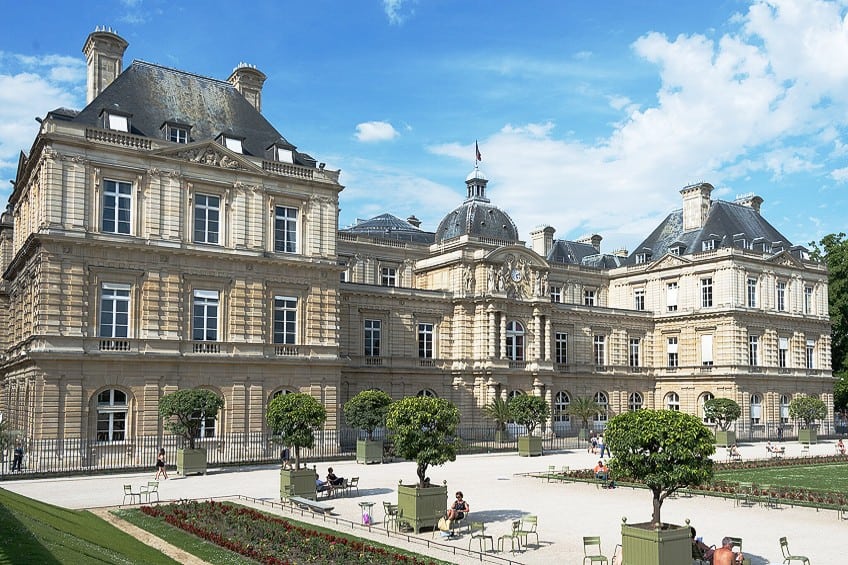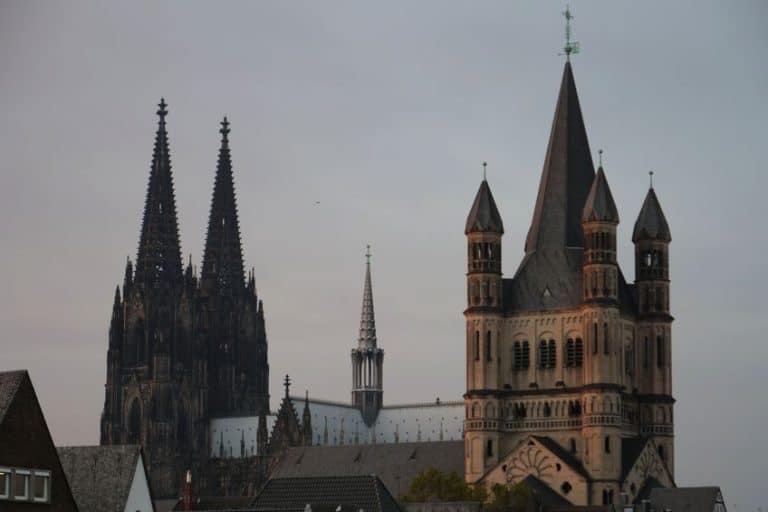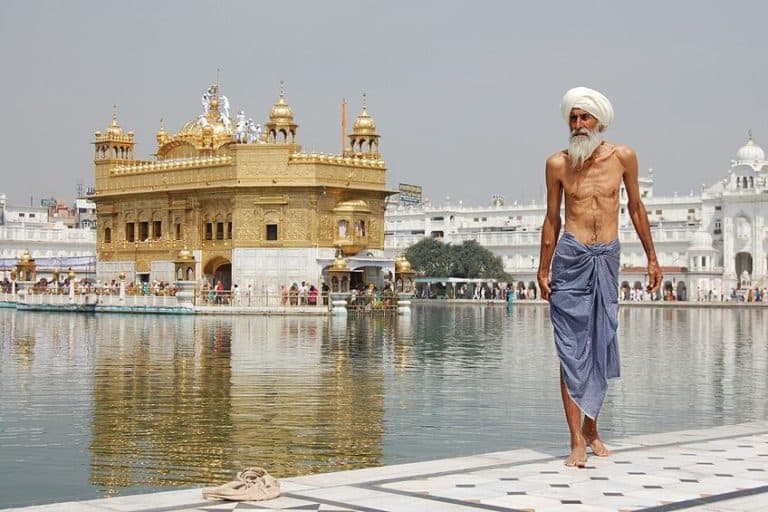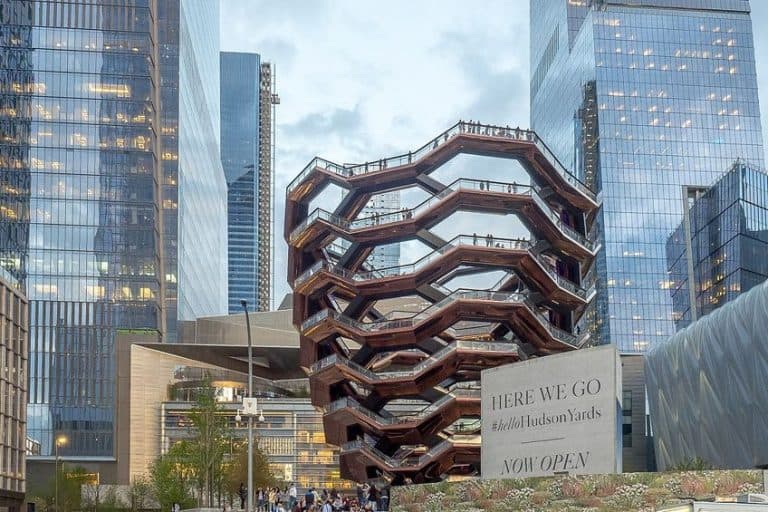Famous Palaces – A Glimpse into Grandeur
What is a palace? Which palaces are the most famous ones? Today, we will answer that question. We will examine ten of the most famous palaces around the world and discuss their history, architecture, and some of the residents who may have lived within their walls over the centuries. If you wish to learn more about some of the most famous palaces around the world, keep reading and see if you agree with those that have been chosen!
A Look at the Most Famous Palaces
Today, we are going to examine ten of the most famous palaces in the world. These palaces are all situated in Europe, and while there are many palaces around the world, those that tend to be the best known are those in Europe. Each of these beautiful palaces will be discussed in some depth, but it is always worth remembering that there is much more to know about each of them.
In addition, there are many other beautiful palaces around the world, and a palace being famous does not necessarily make it one of the world’s most beautiful palaces. Let’s get started.
Alhambra (1238 – 1392) in Granada
| Architect | Various |
| Date Constructed | 1238 – 1392 |
| Architectural Style | Islamic and Spanish Renaissance |
| Location | Granada, Spain |
The Alhambra is one of the oldest palaces of its kind in the world that has served as an interesting site for different cultures and their uses of the site. When this beautiful palace was first constructed, it was constructed by the Nasrid dynasty, the Muslim rulers of the region at the time. The entire region of Spain had been conquered during this period, and the Alhambra was established as a major fortress complex to maintain their control over the region.
The name itself is even descended from an Arabic root that means “the red one”, which is in reference to the reddish hue of the fortress complex.
However, the famous palace that currently stands was not the original structure. The earliest origins of this particular palace and fortress place it in the 9th century, but it was vastly expanded from the 13th to 14th centuries into what it has since become. The full complex, which is particularly large, is made up of a combination of different sections, such as the military zone, the residential and administrative centers, and the actual palaces. The latter is the most resplendently designed, and it is made up of four separate palaces that were meant to serve different roles for the various parts of the royal family.

The Alhambra is particularly noted for its architecture. It makes use of stunning Islamic designs and decorations throughout this famous palace. These include numerous geometric patterns, calligraphic inscriptions, fountains, and painted tiles. It has become one of the most stunning examples of Islamic architecture in Spain and the world. There were later additions to the site, but the Islamic elements remain some of the most gorgeous.
Doge’s Palace (1340 – 1565) in Venice
| Architect | Various |
| Date Constructed | 1340 – 1565 |
| Architectural Style | Venetian Gothic |
| Location | Venice, Italy |
The Doge’s Palace is one of the most famous palaces in Italy and an important historical site in the development of Venice. The purpose of this beautiful palace was to serve as the residence and fortress complex of the leaders of Venice who were known as the doges.
The palace was meant to be both a stronghold as well as serving as a gorgeous home for each successive ruler.
The name itself obviously comes from the name of the official who was once in charge of the city-state when it was still the Republic of Venice, and this famous palace was used by them as soon as it was constructed until the 18th century. It was also constructed because the doges had ruled Venice for significantly longer than the palace that now stands. The famous palace that does presently stand was a reconstruction and expansion of the original wooden fortress that had once existed on the site.

This particular version included the offices and residential areas of the doges, the courts and prison structures of the broader complex, and additional wings that were added later in its development. However, the full complex also contains its own courtyard and impressively large staircase for ceremonial purposes. This beautiful palace has become known for its combination of a number of styles within its walls, with the most prominent being the Venetian Gothic style. However, it also includes aspects of Moorish and Renaissance architecture and is decorated with numerous stunning pieces of artwork to further show the immense wealth and power of the doges who resided within.
Palazzo Pitti (1458 – 1464) in Florence
| Architect | Possibly Luca Fancelli (1403 – 1502) |
| Date Constructed | 1458 – 1464 |
| Architectural Style | Renaissance, Baroque, and Neoclassical |
| Location | Florence, Italy |
The Palazzo Pitti is another of the most famous palaces in the world, and this one has a rather fascinating history because of its connection to one of the most famous families in the history of Florence: the Medici family. The idea behind this particular palace was that Luca Pitti, who was a friend of the head of the Medici family at the time, wanted to construct a palace that would rival the Medici residence.
He ultimately bankrupted himself in this pursuit, never actually finished the construction of the Palazzo Pitti, passed away, and left his children with far less wealth than he had accumulated.
His family was ultimately forced to sell this now-famous palace, and they sold it to none other than the Medici family. The Medici family would greatly expand on the Palazzo Pitti and turn it into the beautiful palace that it has become today. However, the building ended up being predominantly used as a place to store the vast Medici art collection. This is why it has since become one of the premier art museums in the city.
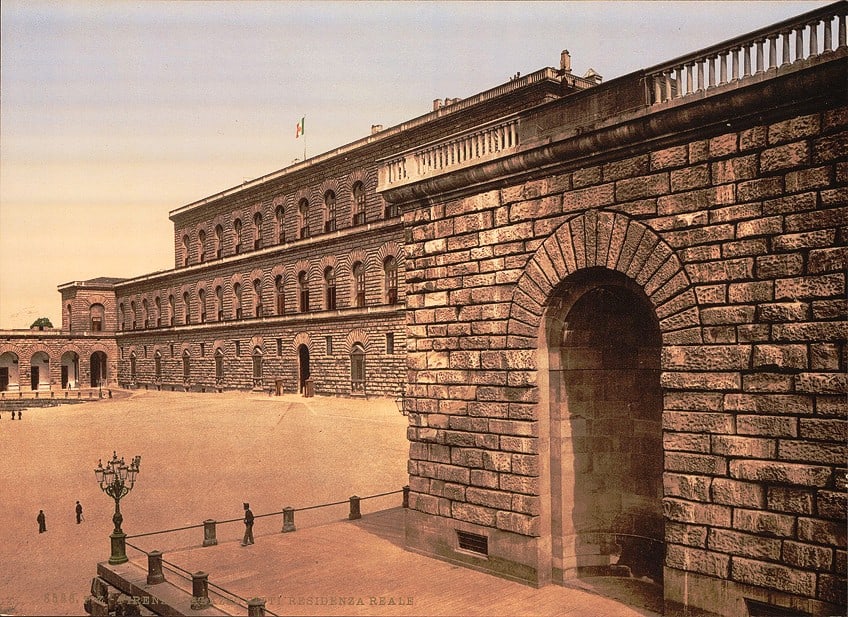
While the architecture of this palace has become noted for its combination of a number of different forms, notably Renaissance architecture, it is better known for the art within its walls. It hosts a number of different galleries with different purposes, such as some displaying paintings by famous Renaissance artists. Some even showcase the furniture of the former rulers of Florence, and one even contains numerous pieces of clothing from different eras in Florence’s history.
Luxembourg Palace (1615 – 1645) in Paris
| Architect | Salomon de Brosse (1571 – 1626) |
| Date Constructed | 1615 – 1645 |
| Architectural Style | Renaissance, Baroque, and Neoclassical |
| Location | Paris, France |
The Luxembourg Palace is one of the most famous palaces in Paris, and it also predates several of the more famous French palaces. In this particular case, it was originally constructed as the home of the mother of King Louis XIII but would eventually go on to become one of the most important sites in the city as it was a legislative structure and eventually the home of the French Senate. It still serves this purpose to this day.
The palace was specifically modeled after another immensely famous palace, and one that has already been discussed, the Palazzo Pitti in Florence.
In this sense, it attempted to emulate certain aspects, such as the Roman style with which it was formulated. It is also surrounded by a stunning garden that was inspired by the Boboli Gardens in Florence. The palace would pass through several generations before it became the seat of the government during the French Revolution. Part of the structure was demolished as a result and new elements were added. While it now serves in its role as a governmental structure, it has also served as a museum.
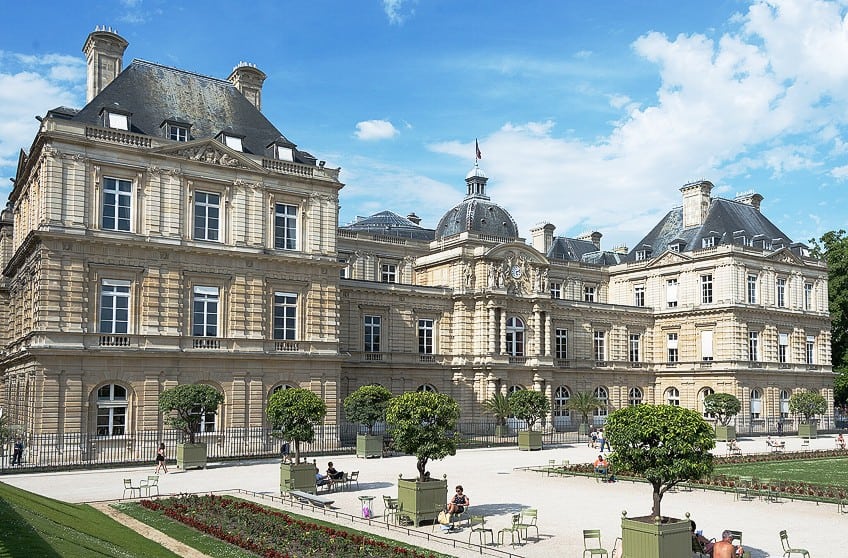
The palace is one of the many that were seized during the French Revolution and saw its purposes and ownership shift. However, this particular palace has seen numerous events and guests and residents over the years, from various kings to Napoleon Bonaparte. It has become one of the most important buildings in the country.
Palace of Versailles (1624 – 1710) in Versailles
| Architect | Various |
| Date Constructed | 1624 – 1710 |
| Architectural Style | Baroque |
| Location | Versailles, France |
The Palace of Versailles is likely the most famous palace in all of France, and it also has an immensely important place in the history of the world, especially throughout the first half of the 20th century. The site itself was originally commissioned by King Louis XIII and expanded by his son into one of the most extravagant Baroque palaces that has ever been constructed. It is particularly notable for the designs that were meant to serve as a means of glorifying the monarchy, and there are a number of rooms and sections in the palace that are dedicated to art and a display of power, such as the famous Hall of Mirrors.
The palace was also the primary seat of power of the French monarchy until the French Revolution.
While there are many famous palaces around the world, few have a place in history like the Palace of Versailles. One of the primary reasons for this is because it was the location at which the Treaty of Versailles was signed.

This immensely important document was the post-World War One peace treaty that Germany was forced to sign, and it has been cited by many, including Adolf Hitler, as a reason for the aggression that led to the Second World War. This famous palace has since become an important part of the cultural tourism of France as it includes an immensely vast collection of art and artifacts from numerous periods, and it also hosts many events throughout the year. It is one of the most visited tourist destinations in the world.
Kensington Palace (1689 – 1694) in London
| Architect | Christopher Wren (1632 – 1723) |
| Date Constructed | 1689 – 1694 |
| Architectural Style | Renaissance, Baroque, and Neoclassical |
| Location | London, United Kingdom |
Kensington Palace is one of the most famous palaces in London, but it does not quite live up to the same reputation as the similarly London-bound Buckingham Palace. However, it is also a royal residence and has been in use for hundreds of years.
At present, it serves as the official London residence of various members of the royal family.
This famous palace started its existence as a mansion that was later acquired by William III and Mary II after they wanted a better residence in the region. It was soon expanded by perhaps the most famous British architect, Christopher Wren, and it was transformed into the structure that presently stands.
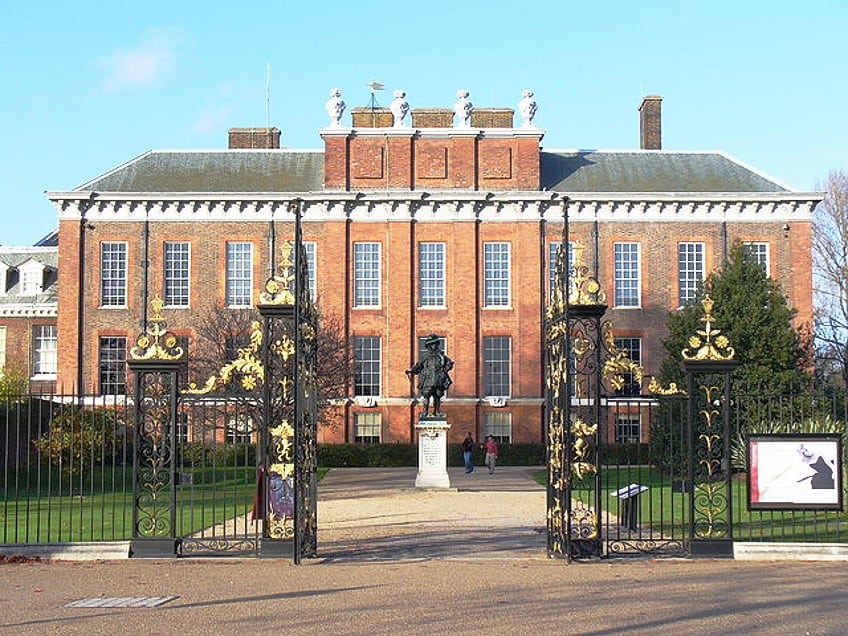
Today, aside from being a residence, it is also a museum with thousands of artworks. The very structure of the palace is also of note as the present form was constructed atop an existing structure, and this has led to the building itself being made up of a variety of architectural styles.
Winter Palace (1754 – 1762) in Saint Petersburg
| Architect | Bartolomeo Francesco Rastrelli (1700 – 1771) |
| Date Constructed | 1754 – 1762 |
| Architectural Style | Russian Baroque |
| Location | Saint Petersburg, Russia |
The Winter Palace is one of the most famous palaces in Russia, and it served as the official residence of the Russian czars from its construction until the abdication of Nicholas II. However, it has since become a museum, as is the case with many examples of famous palaces around the world.
With regard to the history of this particular site, it was not actually the first palace on the site.
It was originally far more modest but was replaced with a larger stone palace, but that palace was also then eventually replaced. The present form is the final iteration of this long process of palace upon palace. The final form was also an example of Russian Baroque architecture and led to the Winter Palace becoming one of the most lavish palaces in the world.
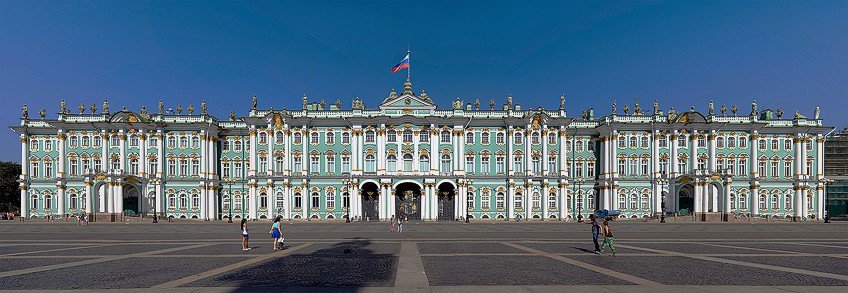
The façade of the structure, with a greenish-blue and white exterior, the various sculpted figures, and the golden stucco along the walls have led to the Winter Palace being considered one of the most opulent and beautiful palaces to have ever been constructed. It has been a museum ever since the Communist Revolution in 1918.
Royal Palace of Brussels (1783 – 1934) in Brussels
| Architect | Various |
| Date Constructed | 1783 – 1934 |
| Architectural Style | Neoclassical |
| Location | Brussels, Belgium |
The Royal Palace of Brussels is a beautiful palace in the capital city of Belgium, and it is the official residence of the Belgian Monarchy. However, they do not actually live there. It is instead primarily used for the main duties of the monarchs but has remained one of the most important sites in the country regardless.
The oldest history of the site dates back to the medieval period when it was part of an entirely different palace.

However, that palace was destroyed in a fire and the new version was constructed atop the ruins of the old. The Neoclassical façade has become one of the most prominent elements of this particular palace. The palace can be visited and there are numerous stunning rooms on display.
Buckingham Palace (1820s – 1853) in London
| Architect | John Nash (1752 – 1835) and Edward Blore (1787 – 1879) |
| Date Constructed | 1820s – 1853 |
| Architectural Style | Neoclassical and Baroque |
| Location | London, United Kingdom |
Buckingham Palace is, quite likely, the most famous palace in the United Kingdom. Even though it is only one of the many residences of the British Monarchy, it has managed to become one of the most notable. One of the reasons for this is likely because it is situated in London, the most famous and visited city in the United Kingdom.
This famous palace started its life as a townhouse, but it was eventually acquired by the monarchs, who ordered its expansion and renovation.
It would be enlarged into its present state under the eye of John Nash, one of the most famous English architects of all time, and this led to the structure becoming what it is today. Queen Victoria was the first to use the palace as the official London residence of the British monarchs. This beautiful palace is truly enormous. It contains over 700 rooms, its own chapel, cinema, ballroom, surgery room, and post office. It was also the primary residence during the reign of Queen Elizabeth II, who used it to conduct official duties. Various members of the royal family still reside within its walls.
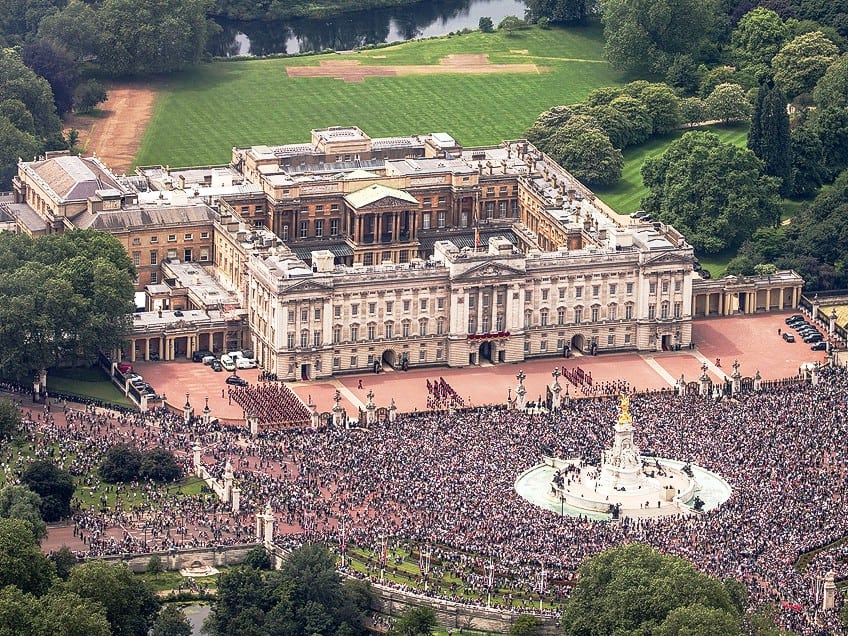
The famous palace has since become an important part of tourism in the city, and it includes an art collection, a museum, and various events, such as the daily Changing of the Guard. The palace has remained one of the most enduring symbols of the British Monarchy ever since its construction and it shall likely remain that way for a very long time.
Grand Kremlin Palace (1837 – 1849) in Moscow
| Architect | Various |
| Date Constructed | 1837 – 1849 |
| Architectural Style | Russian Revival and Byzantine Revival |
| Location | Moscow, Russia |
The Grand Kremlin Palace is perhaps one of the most famous structures in all of Russia, but the actual design of this famous palace is likely less known than the more famous Winter Palace in Saint Petersburg. The reason for this fortified complex becoming such a famous site is because of its present existence as a residence for the Russian president and a major part of the government of the country. One of the interesting things about this immensely famous palace is that its name has become similar to the term “White House”, as it has come to represent the Russian government as a whole. When one talks about the “Kremlin”, they often mean the government of the country rather than the structure itself.
However, the structure is also one of the most famous palaces in the world and a highly fortified structure.
It was established as a home of the czars but is virtually a small city as it includes various palaces, citadels, and cathedrals that are enclosed by walls. The enclosed aspect and the grand design of the structure were meant to be evocative of the immense might and power of the Russian monarch and is a truly gigantic structure when taken as a whole.

There have been numerous famous residents who lived within the walls of this famous palace, such as Nicholas I, who commissioned its construction, Nicholas II, the final czar, the various communist leaders, such as Vladimir Lenin, Joseph Stalin, and Nikita Khrushchev. In more recent decades, it has been the home and working residence of Boris Yeltsin and the present president, at the time of writing, Vladimir Putin.
And so, we have examined several of the most famous palaces around the world. We have looked at a number of different types of palaces that have been created under different rulers and different architectural styles. However, they are all generally considered to be some of the most beautiful palaces that have ever been constructed. Perhaps you agree with this list and perhaps you do not agree with this list. Regardless, if you ever get the chance to visit any of these gorgeous palaces, do yourself a favor and go see them!
Frequently Asked Questions
What Is a Palace?
A palace is a structure that is generally intended to be large and impressive because it is meant to serve as the official home of a ruler of some kind. There are palaces for various rulers, such as monarchs, archbishops, and even presidents. Many of the famous palaces around the world are also resplendently decorated and meant to serve as symbols of wealth and power. They are also often fortified to protect the occupants from the general population.
Are There Different Types of Palaces?
There are many different types of palaces around the world, and they all generally differ based on the type of residence, function, or style of the palace in question. There are imperial and royal residences that house monarchs, episcopal palaces that house religious figures, noble palaces which house aristocrats, and presidential palaces which house presidents. Many palaces are also classified according to the period during which they were constructed and the architectural style of their design.
What Is the Difference Between a Palace and a Castle?
Both of these types of structures tend to be the homes of rulers, but a palace is generally designed as a means of showcasing wealth and power. They can be fortified, but often aren’t as fortifications tend to be less attractive. Castles, on the other hand, are inherently fortified and meant to be strategic locations for protecting those within and/or to serve as positions of protection against foreign attack.
Which Architectural Styles Were Most Commonly Used in Palaces?
Some of the most common styles for famous palaces include Renaissance, Baroque, and Neoclassical architectural styles. Baroque architecture is perhaps the one that seems the most palace-like, as it emphasizes immense levels of decoration and other architectural flourishes. However, any architectural style could technically be used. The flashier the style, the more likely it was to be used though.
What Is the Most Famous Palace?
It’s possible that the most famous palace in the world is Buckingham Palace. It has become one of the most important tourist destinations in the United Kingdom and a symbol of the most famous living monarchy. Its continued use as an actual royal residence rather than a museum may have contributed to this. However, another contender may be the Palace of Versailles in France.
Justin van Huyssteen is a freelance writer, novelist, and academic originally from Cape Town, South Africa. At present, he has a bachelor’s degree in English and literary theory and an honor’s degree in literary theory. He is currently working towards his master’s degree in literary theory with a focus on animal studies, critical theory, and semiotics within literature. As a novelist and freelancer, he often writes under the pen name L.C. Lupus.
Justin’s preferred literary movements include modern and postmodern literature with literary fiction and genre fiction like sci-fi, post-apocalyptic, and horror being of particular interest. His academia extends to his interest in prose and narratology. He enjoys analyzing a variety of mediums through a literary lens, such as graphic novels, film, and video games.
Justin is working for artincontext.org as an author and content writer since 2022. He is responsible for all blog posts about architecture, literature and poetry.
Learn more about Justin van Huyssteen and the Art in Context Team.
Cite this Article
Justin, van Huyssteen, “Famous Palaces – A Glimpse into Grandeur.” Art in Context. September 19, 2023. URL: https://artincontext.org/famous-palaces/
van Huyssteen, J. (2023, 19 September). Famous Palaces – A Glimpse into Grandeur. Art in Context. https://artincontext.org/famous-palaces/
van Huyssteen, Justin. “Famous Palaces – A Glimpse into Grandeur.” Art in Context, September 19, 2023. https://artincontext.org/famous-palaces/.


